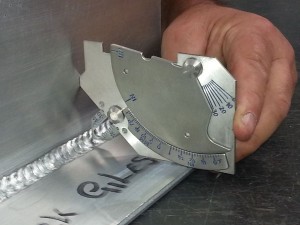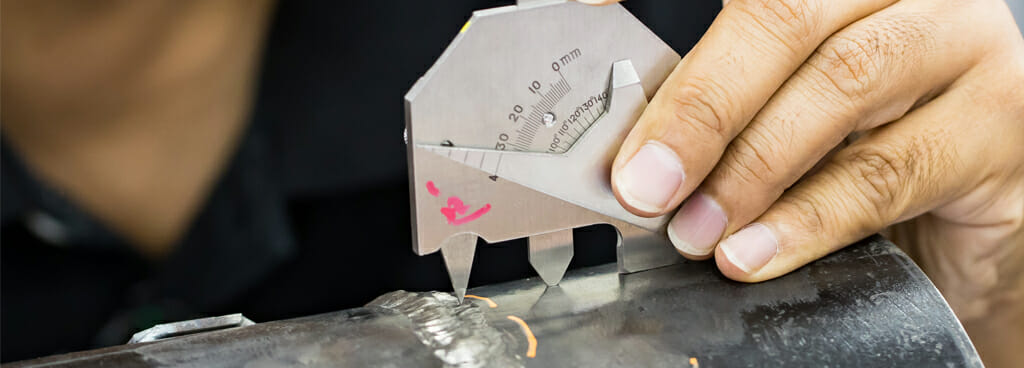An Extensive Checklist for Effective Welding Evaluation Practices
In the world of welding, the integrity of frameworks is critical, necessitating a strenuous method to examination methods. Discovering these important components can generate insights that exceptionally impact welding procedures.
Understanding Welding Specifications
Welding standards play a vital role in making certain the quality and security of bonded components and structures. These requirements develop the criteria for materials, treatments, testing, and evaluation, therefore offering a structure for regular quality assurance in welding processes. Different companies, including the American Welding Society (AWS), the International Company for Standardization (ISO), and the American Culture of Mechanical Engineers (ASME), have created comprehensive requirements that control various aspects of welding.
Comprehending welding requirements is essential for professionals in the field, as adherence to these standards decreases the risk of problems and failures in welded joints. These criteria cover details requirements for weld quality, including acceptable tolerances, the kind of welding methods to be made use of, and the credentials required for inspectors and welders.

Pre-Welding Evaluation Actions
Before any kind of welding process starts, a comprehensive pre-welding examination is vital to recognize prospective concerns that may jeopardize the high quality of the weld. This initial step acts as a crucial structure for ensuring compliance with suitable welding codes and standards.
The first step in the pre-welding assessment is to validate the materials being utilized. Next off, it is vital to evaluate the fit-up of the elements to make sure correct alignment and joint arrangement.
Furthermore, assessing the sanitation of the surfaces is crucial; contaminants such as paint, oil, or rust can negatively affect the top quality of the weld. Following this, a comprehensive evaluation of the welding tools need to be conducted, ensuring that it is calibrated and in good functioning problem.
Last but not least, examining the credentials of the welding personnel is critical. Welders have to have the necessary accreditations and experience to carry out the details welds needed for the task. By sticking to these pre-welding evaluation actions, the chance of defects and failures in the final weld can be significantly minimized.

In-Process Assessment Strategies
In-process inspection strategies play an important role in ensuring the stability and quality of welds as they are being performed. These methods allow examiners to recognize flaws or variances from specs in real time, consequently making sure and preventing expensive repairs adherence to layout requirements.
One trick technique includes aesthetic inspection, where assessors analyze the weld bead for uniformity, infiltration, and correct profile. This can be enhanced by the use evaluates to measure weld measurements, guaranteeing conformity with established tolerances. In addition, the implementation of non-destructive testing (NDT) techniques, such as ultrasonic testing or magnetic fragment testing, throughout the welding procedure can expose subsurface defects that might not be visible on the surface.
An additional essential facet is keeping an eye on welding criteria, consisting of voltage, amperage, and take a trip rate. Uniformity in these parameters is essential for attaining optimal weld quality. Recording these parameters during the welding operation offers a deducible record for future reference.
Training workers in proper inspection techniques and the use of appropriate devices boosts the performance of in-process assessments. By incorporating these practices, organizations can accomplish better welds, decrease rework, and eventually guarantee the safety and security and integrity of bonded frameworks.
Post-Welding High Quality Checks
Following the completion of welding procedures, post-welding quality checks are crucial to validate that the welds fulfill all specified requirements and requirements. These checks are essential for making certain the integrity and longevity of the welded joints. The examination process commonly starts with an aesthetic evaluation, assessing for surface area problems such as cracks, porosity, or incomplete blend.
Subsequently, non-destructive testing (NDT) approaches, such as ultrasonic testing, radiographic testing, or magnetic bit testing, might be employed to spot internal problems that are not noticeable to the nude eye. Each technique has its distinct benefits and is picked based on the weld's place, material kind, and Get More Info the nature of the application.
Evaluating the mechanical buildings of the weld, including tensile toughness and ductility, can supply further assurance of performance under operational conditions. In general, thorough post-welding examinations are vital for keeping adherence, efficiency, and security to regulatory and industry requirements.
Paperwork and Coverage
Exactly how can reliable documents and reporting improve the welding evaluation procedure? Accurate documentation and comprehensive reporting are crucial components that guarantee the integrity and top quality of welding procedures. Welding Inspection Milwaukee. They work as an official document of assessment findings, facilitating liability and traceability in compliance with sector standards

A well-structured reporting system allows inspectors to plainly communicate any type of areas, non-conformances, or inconsistencies calling for enhancement. This transparency promotes a setting of continual renovation, as stakeholders can readily evaluate past performance and carry out restorative actions.
In addition, reliable documents consists of discover this detailed documents such as welding treatment specifications (WPS), welder qualifications, and evaluation checklists. These elements offer a framework for assessing weld quality and adherence to established standards. In case of disagreements or top quality concerns, detailed documents works as a reliable reference, lowering obscurity and securing all celebrations included.
Lastly, maintaining arranged records assists in training and certifying employees, making sure that market best practices are promoted. Eventually, precise documentation and reporting not just improve the welding evaluation procedure yet likewise add to the total go to the website security and reliability of bonded structures.

Final Thought
In final thought, an extensive checklist for effective welding inspection techniques is essential for making certain top quality and safety and security in bonded structures. Adherence to developed welding criteria, careful pre-welding assessments, extensive in-process assessments, and comprehensive post-welding quality checks jointly add to the stability of welded joints.
Welding criteria play a critical function in guaranteeing the quality and security of bonded structures and components. Various companies, including the American Welding Society (AWS), the International Company for Standardization (ISO), and the American Society of Mechanical Designers (ASME), have actually developed thorough criteria that regulate various elements of welding.
Following the conclusion of welding operations, post-welding quality checks are essential to verify that the welds meet all defined standards and needs - Welding Inspection Milwaukee.In final thought, a comprehensive list for effective welding examination methods is essential for guaranteeing top quality and security in bonded structures. Adherence to developed welding standards, careful pre-welding inspections, extensive in-process evaluations, and complete post-welding quality checks collectively add to the integrity of welded joints